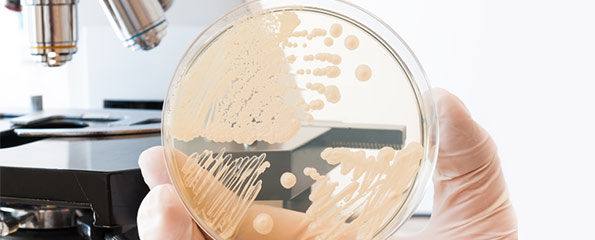Self-destructing bacteria a possible key to infection control
A discovery that the drug resistant superbug Pseudomonas aeruginosa can explode itself for the benefit of its “community” is giving scientists a new path to follow in controlling antibiotic resistant infections.
An international team of microbiologists led by researchers from UTS’s ithree institute says the capacity of Pseudomonas aeruginosa cells to explode violently helps to explain how the bacteria cause infections with potentially deadly consequences and may lead to new treatments.
“When most people think about bacterial cell death, they think of the cell dying and their contents slowly leaking out, similar to what you would see with a piece of fruit rotting,” said lead investigator Associate Professor Cynthia Whitchurch.
“What’s so amazing about this discovery is that we now know the bacteria have a process that enables them to actively explode, and therefore efficiently release all of their internal contents, making these available for use by the remaining members of their community.”
Pseudomonas aeruginosa infections present a growing risk in hospitals where people with compromised immune systems, such as the elderly, newborns and surgical and cancer patients, are vulnerable to infection.
The superbug is multi-drug resistant and responsible for significant increases in death rates in hospitals around the world. It survives in what are known as biofilms – groups of cells or microorganisms that stick to each other and adhere to a surface.
Understanding the explosive process is important because once released, the contents (which include the proteins and extracellular DNA) are used by the remaining bacteria as a “glue” to build the biofilm, as a food source, and as “virulence factors” that contribute to the infection process.
“We originally thought the extracellular DNA (an important biofilm component) might have been produced through a process where the cells die and slowly leak out their genomic DNA,” said research team member Dr Lynne Turnbull, also from the ithree institute. “But by using a special stain that lights up fluorescently when it detects extracellular DNA, we saw cells that were exploding like starbursts or fireworks of DNA.”
Dr Turnbull said the Pseudomonas cells undergo an incredible transformation before exploding with the whole process, in some instances, taking place in just six seconds.
“The normal bacteria look like little rods or pills,” she said. “One day, as we looked under the microscope, we saw one of the cells turn from a hard, structured rod into a round, soft ball. Within a few more seconds, it then violently exploded—it’s amazing how quickly it happens and is likely the reason it hasn’t been observed before.”
To understand why the cells explode, the researchers looked to bacteriophage – viruses that infect bacteria – which had already been linked with rapid bacterial cell death. The team identified a gene specifically involved in the process of Pseudomonas aeruginosa cells rounding up and exploding. Mutants that don’t have this gene don’t explode and, more importantly, don’t build biofilms.
Associate Professor Whitchurch said that the mechanism was surprising and added another element to their thinking about the role of bacteriophage in bacterial populations.
“You wouldn’t think that having a continuous viral infection was a good thing but the viral DNA in the genome of the bacteria is providing an advantage to the population – it’s being maintained for a reason.”
The researchers will now turn their attention to understanding the specific role of exploding cells in infection. They predict it will be important not only in biofilm infections, but also in tackling the global problem of antibiotic resistance.
“We think there will be a two pronged approach: one is to prevent the biofilms being produced by stopping bacterial explosions, but if we can’t prevent it, then the second approach will be to induce the process that cause the bacteria to explode, so they all die en masse causing the infection to clear,” Associate Professor Whitchurch said.
The research paper “Explosive cell lysis as a mechanism for the biogenesis of bacterial membrane vesicles and biofilms” has been published in Nature Communications.
(Source: University of Technology – Sydney, Nature Communications)
Dates
Tags
Created by:

 Login
Login














